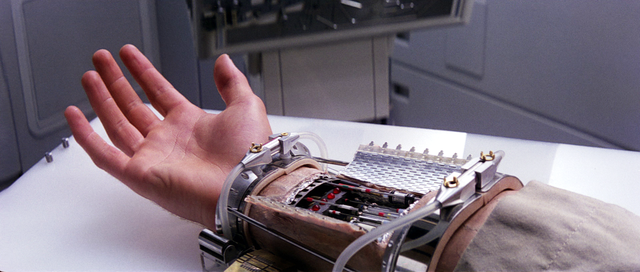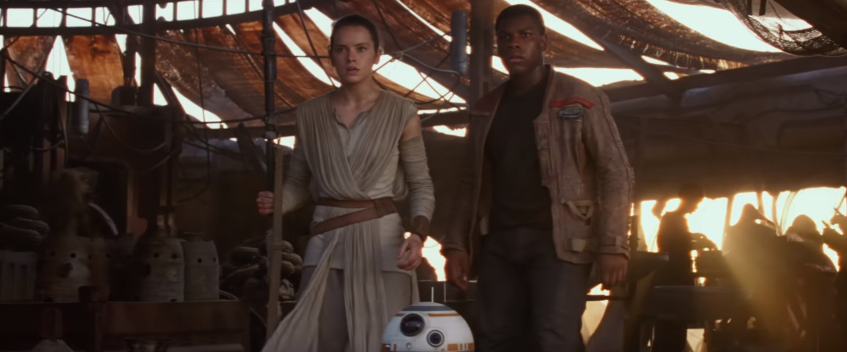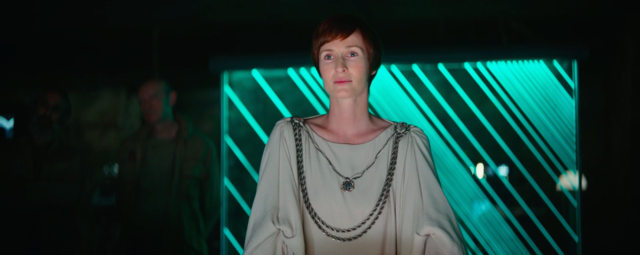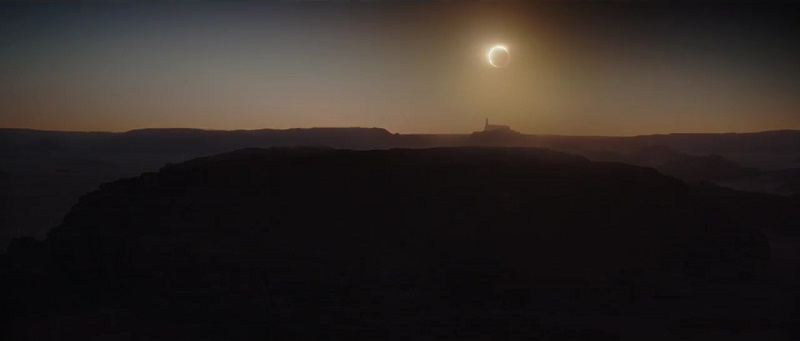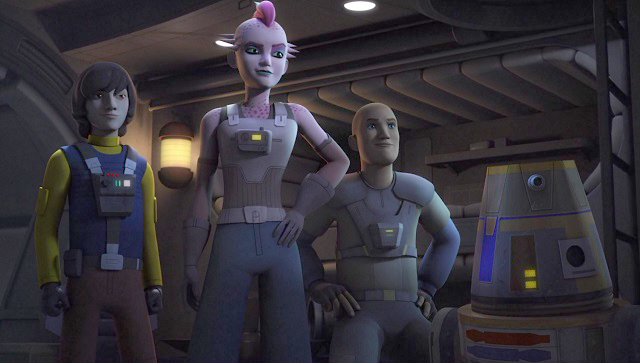
Ben: Writing teenagers is hard. It’s very easy for teens to come off as annoying, since the most common stereotypes for them are them being self-confident, rebellious or angst-ridden, and sometimes all three at once. Of course, most adult viewers won’t remember what being a teenager is like, loaded with the beginnings of emotions and understanding that will eventually give way to adulthood, typically through circumstances and time.
Rebels stepped into this minefield right away by giving us Ezra, the precocious youth with the laser slingshot and enough attitude to thumb his nose at the stormtroopers stomping around his hometown. Ezra has developed a lot over the show’s course, though, so the writers knew better than to just give us a teenager and leave him as it was for the long term. It probably helps that they had experience with Ahsoka’s character arc in The Clone Wars.
In “Iron Squadron”, we meet a crew of three teens much like Ezra when we first saw him: young, scrappy and willing to stick it to the Empire however they can. Unlike Ezra, who was on his own before being found by Kanan, the trio who make up Iron Squadron only have each other. Their leader, Mart, lost his father in the resistance, and it was likely his idea for them to take a ship and use it to fight back however they could. Unlike Ezra, who was embittered about fighting after his own parents’ death, Mart sought to follow his father’s example. Read More
